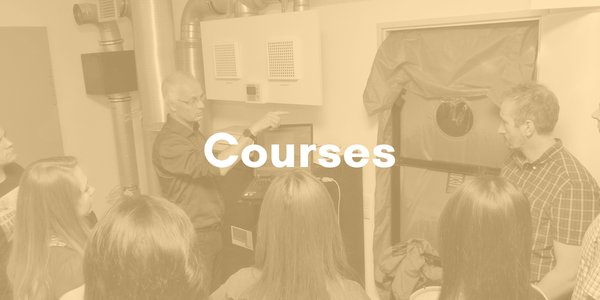
Courses
Wed 1 Oct 2014 – Sat 4 Oct 2014
Capital Business Centre, 22 Carlton Road, South Croydon, United Kingdom
10 day Certified Passive House Designer/ Consultant Course - Each course is a challenging and intensive course of instruction, and is aimed at qualified and motivated building professionals who have a passion to learn the art of Passive House design, the world’s leading standard in low‐energy, sustainable construction. PART 2 DAY 3 – passive house airtightness workshop . With increased insulation upgrades of existing houses , the knowledge of how to achieve , measure and test for air tightness is important along with proper ventilation which is essential for occupant health, comfort and indoor air quality. Airtightness terminology , measurement and standards Building fabric and common sources of air leakage Ventilation and occupant health Achieving a continuous airtight layer, products & details Requirement for MVHR, effects of building airtightness on efficiency Air leakage test & Thermal Imaging demonstration Calculating losses due to Leakage ——————————————————————————————————————— DAY 4 – passive house windows Windows, including thermal-bridge free and airtight connections play a crucial role for the comfort and energy efficiency of a passive house. You will learn the specific requirements for window frames, glazing and doors, suitable materials, details and the reference to the detection method Passive House Planning Package (PHPP) know. Practical exercises to consolidate what has been learned. Window glazing, doors Requirements for U-values ??and surface temperatures Influence on comfort and Heatability Detection methods for Windows: EN 10077 Part 1 and 2 Components: frames, glazing, glass border, shading, roof windows Overview of the relevant work areas with PHPP (Passive House Planning Package) Examples for connection details in masonry and timber construction Planning criteria for thermal bridging and air-tight connection details Exercises: U-value calculation, detailed development and discussion ———————————————————————————————————————— DAY 5 – Passive House ventilation & heating You will learn the requirements for integrated planning in relation to the trade know ventilation, which are essential for the design and construction of passive houses. The aim of the workshop is the fact that you recognize all the important tasks that have to be solved in the context of planning and design of ventilation systems for passive houses. Heat Recovery Ventilation in Passive House Why the passive house needs a ventilation system? Ventilation concepts Zoning and interpretation of the volume flows Components of ventilation systems Overview of the relevant work areas with PHPP (Passive House Planning Package) Exercise: Design a ventilation system and interpretation of the volume flows in the single-family home Acceptance, adjustment and commissioning of the entire ventilation system Exercises: Ventilation Heat Loss Calculations passive house heating In this part, you will deepen your knowledge of the features in the passive house and learn different concepts for heat generation, storage and distribution. In practical exercises, you will apply the newly acquired knowledge. Heat supply for heating and hot water Special for heating and hot water in the passive house Supply air heating Heating load – Definition and calculation in the passive house Concepts for heat generator: heat pump, biomass, fossil fuels Compact heat pumps for ventilation, heating and domestic hot water ———————————————————————————————————————— http://passivehousetraining.co.uk/?page_id=11 Liity Google Hangoutsilla: https://hangouts.google.com/hangouts/_/calendar/bWFyaWEucml2ZXJvQHBhc3Npdi5kZQ.578jd1vl6ihmupvrsmanqh505g?hs=121